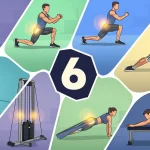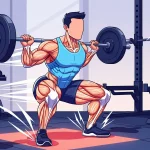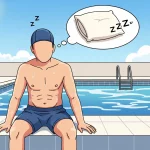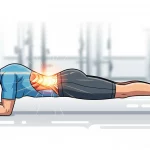Hey, Fit People!
Have you ever suddenly felt a sharp pain in your muscles while exercising or even in the middle of the night?
Yup, that’s called a muscle cramp—a common condition that affects many people.
While muscle cramps aren’t usually serious, the pain can be quite intense and can limit your movement.
Let’s take a deeper look at the causes, symptoms, prevention, and how to effectively deal with muscle cramps!
What Are Muscle Cramps?
Muscle cramps are sudden, involuntary contractions of one or more muscles that cause pain.
Most commonly, muscle cramps occur in the leg muscles, such as the calf or thigh, but they can also happen in other parts of the body.
Cramps can last from a few seconds to several minutes and are often triggered by factors such as overuse, dehydration, or a lack of certain nutrients.
Causes of Muscle Cramps
There are several factors that can trigger muscle cramps. Here are some of the most common causes:
1. Dehydration
When your body lacks fluids, your electrolyte balance can become disrupted, making muscles more prone to cramping. Dehydration often occurs when you sweat a lot but don’t drink enough water.
2. Electrolyte Imbalance
Electrolytes such as sodium, potassium, calcium, and magnesium are essential for muscle function. A deficiency in any of these electrolytes can lead to muscle tension and cramps.
3. Overexertion
Intense exercise or overworking your muscles without proper warm-up and cool-down can lead to cramps. Fatigued muscles are more likely to contract uncontrollably.
4. Poor Blood Circulation
Limited blood flow to the muscles, especially when sitting or standing for a long time, can cause cramps because the muscles do not get enough oxygen.
5. Incorrect Body Position
Staying in the same position for too long, such as sitting with your legs crossed, can also trigger muscle cramps. This happens because the muscles aren’t receiving enough blood flow.
Symptoms of Muscle Cramps
The symptoms of muscle cramps are quite easy to recognize:
- Sudden pain in the muscle that feels like a strong pull.
- Hard and tight muscles that may appear bulging or contracted when touched.
- Muscle fatigue after the cramp subsides, leaving the muscle feeling weak and difficult to move.
How to Prevent Muscle Cramps
Preventing muscle cramps can be done with some simple steps to keep your muscles relaxed and hydrated. Here are a few ways to prevent muscle cramps:
1. Stay Hydrated
Make sure you drink enough water throughout the day, especially when exercising or in hot weather. Good hydration is key to preventing muscle cramps.
2. Consume Foods Rich in Electrolytes
Eat foods rich in potassium (like bananas), calcium (like dairy products), and magnesium (like leafy greens) to maintain your body’s electrolyte balance.
3. Warm Up and Cool Down
Always do a warm-up before exercising and a cool-down afterward. Stretching before and after workouts helps improve blood flow and muscle flexibility, which can help reduce the risk of cramps.
4. Get Enough Rest
Make sure you give your body enough rest, especially after intense workouts. Overworked muscles are more prone to cramping.
5. Avoid Overtraining
Avoid pushing your muscles harder than they can handle. Gradually increase the intensity of your workouts so your muscles can adjust to heavier loads.
How to Treat Muscle Cramps
If you experience muscle cramps, here are some effective steps to relieve the pain and help your muscles recover:
1. Gentle Stretching
When a cramp strikes, stretch the affected muscle. For example, if the cramp is in your calf, straighten your leg and gently pull your toes toward you to relieve the tension.
2. Massage the Muscle
Gently massage the cramped muscle to help relieve the contraction. Massaging can improve blood flow to the area and speed up recovery.
3. Use a Warm or Cold Compress
If the muscle feels very tight, use a warm compress to help relax it. On the other hand, a cold compress can help reduce pain and inflammation if needed.
4. Drink Water or Electrolyte Drinks
If dehydration is the cause of your cramps, drink water or an electrolyte drink right away to restore fluid balance.
5. Move Slowly After the Cramp
After the cramp subsides, try some light movement such as walking or gentle stretching to increase blood flow and help the muscle recover.
Conclusion
Muscle cramps can be quite common and disruptive, but with proper prevention and quick treatment, you can reduce the discomfort and prevent cramps from happening again.
Keep your body hydrated, do a warm-up before activities, and allow your muscles time to recover after workouts.
If you experience a cramp, remember to quickly stretch or massage the affected area to alleviate the pain.
So, Fit People, now you know how to prevent and treat muscle cramps.
Stay active, take care of your body, and enjoy your workouts without sudden pain!
Want a comfortable and safe exercise? Come on, just go to FOCUS FIT, here you can exercise safely and comfortably of course accompanied by experienced and certified instructors!





